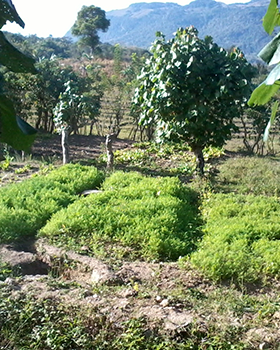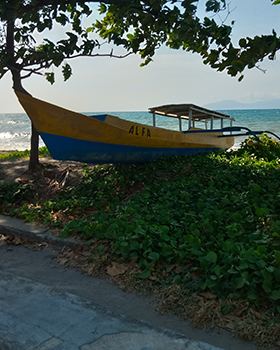

Latest Books East Timor: A Guided Author Tour
The first thing that hits you when you step off a plane at the small, palm-fringed airport in Dili, the capital of the Democratic Republic of Timor-Leste (more commonly known as East Timor), is the sticky heat. Dili is, after all, in the earth’s heat band: 600 miles south of the equator on the eastern fringe of the Indonesian archipelago and little more than an hour’s flight time from northern Australia.
The second thing you’ll notice is how easy-going people are, from the customs and immigration officials to the few taxi drivers hawking for business outside the terminal. Maybe that’s a function of the heat, as well. But East Timor is not a major tourist destination, so foreigners aren’t regarded as walking ATM machines as in other parts of Southeast Asia. You’re a curiosity, as much as anything.
Upon becoming independent in 2002, East Timor adopted the greenback as its currency. For a ride into town, a driver asks for 10, maybe 20 dollars, but with a little persistence, they may agree to five. In one of the crowded areas, the cost might be 50 cents. But keep in mind, there’s a lot of standing around for a taxi driver: most are lucky to get one fare a day.
Dili is a sleepy tropical backwater. The remains of its Portuguese colonial past can be seen in the many Catholic churches, the occasional fraying stucco building, and the peculiar names beloved by Timorese, like Silvano and Benedito, Fatima and Domingas.
The devastation caused by the country’s struggle to be free of Indonesia (which invaded in 1975) is also apparent. After the Timorese voted overwhelmingly for independence in 1999, the Indonesian military set its armed militias loose on a scorched earth policy as payback. Everything that could be destroyed was, from houses, schools and farm animals to public buildings and government records.
New buildings have popped up since: hotels, offices, a modern supermarket. And the road along the seafront has been restored so that morning joggers can glimpse fishermen casting nets from outrigger canoes and afternoon strollers find children yelping and laughing as they play soccer with whatever passes for a ball along the sand.
Childhood laughter is another thing that strikes you about Timor: in fact, to hear children sing unselfconsciously as they stroll by or watch them play in groups in the street outside their homes reminds those of us of a certain age how things used to be in the West when we had far less but seemed to enjoy it far more.
For a people with such a traumatic past—500 years of often neglectful Portuguese rule, a ruthless Japanese occupation in World War II, the brutal 24 years of Indonesian occupation during which at least a 10th of the population died from forced relocations, and the use of food supplies as weapons to dampen resistance—the Timorese are surprisingly relaxed, contented, and generally happy to engage with foreigners.
But none of that is sufficient to make East Timor a compelling setting for contemporary crime novels. The ‘X’ factor lies in the rich and layered traditions, which are still very much a part of the culture.
Almost 99 percent of Timorese are Catholic, and the Church plays an important role in people’s lives. Just below the surface, however, most Timorese are animist to the core. They believe crocodiles—found almost everywhere along the island’s coasts—are their ancestors and that a crocodile actually created their island out of its own body to repay a mythical boy who saved its life.
The further one travels out from Dili, the more apparent is the hold that customary beliefs have on people. In rural districts, most people derive their livelihoods from subsistence farming. Education levels are low, though improving, and seasonal malnutrition is common. The new state of Timor-Leste competes with older, time-honored ways of doing and understanding things.
 Uma lulik—sacred houses—are common throughout the rural districts where they govern the social life of villages. Graves are often marked by both Christian symbols and animist totems, sometimes the latter alone. Dozens of ancient rituals are enacted to appease the spirit world and ensure the dead—who continue to exist in another form—leave the living in peace.
Uma lulik—sacred houses—are common throughout the rural districts where they govern the social life of villages. Graves are often marked by both Christian symbols and animist totems, sometimes the latter alone. Dozens of ancient rituals are enacted to appease the spirit world and ensure the dead—who continue to exist in another form—leave the living in peace.
This alternative way of experiencing reality provides all sorts of possibilities for crime novels and raises some confronting questions along the way.
Chris McGillion is the author of The Crocodile’s Kill and The Sand Digger’s Skull—the first two novels in the East Timor Crime Series for Coffeetown Press. To learn more please visit his website.
- Africa Scene: Iris Mwanza by Michael Sears - December 16, 2024
- Late Checkout by Alan Orloff (VIDEO) - December 11, 2024
- Jack Stewart with Millie Naylor Hast (VIDEO) - December 11, 2024




